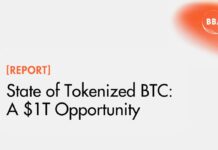
The past two weeks have been some of the most intense in bitcoin’s history as Bitcoin Core and Bitcoin Unlimited went head to head in what appears to be the last metaphorical battle.
Bugs in Bitcoin Unlimited were irresponsibly revealed and exploited. It was then found the bug was partly due to Bitcoin Core’s use of asserts in production, an unusual practice. Some exchanges then made a fork statement which apparently bound them to Bitcoin Core. It quickly backfired as the market sent the price down by $300 due to what some saw as a statement which places the entire currency into question.


Other exchanges quickly came out to say they will follow the longest chain, but another bug was exploited which again triggered asserts, sending nodes down, to only quickly recover.
During this period, Bitcoin Unlimited (BU) has retained around 40% hashrate share with bitcoiners now waiting for the decision of F2Pool, one of the bigger miners with some 11% network share. There are indications they may be switching, at which point Bitcoin Unlimited would have more than 50%. Once that is reached, we may see a psychological shift in attitudes as a fork moves towards becoming inevitable.
Technically, once more than 50% is reached, BU can fork at that point, but they most probably won’t because miners want to assure there will be no chain split. As such, they are likely to wait for 80% or maybe even 90% of the hashrate before they fork.
BW and Bixin (formerly known as HaoBTC) would give the network around 60%, perhaps 65%. Bitfury may be slightly swaying. If BU reaches 65%, they too may switch, giving the network 75%-80%.
Once 75%-80% is reached, miners will probably want to wait another month or two to give others a chance to upgrade. At that point, it is likely most, if not all, miners will switch, thus they’ll probably wait to reach 95%-100% network share. Once they do, they can then create a 2MB block.
Would There Be a Chain Split?

 Once a 2MB block is created, the network can, technically, split into two chains. One chain can continue operating under Bitcoin Core (BC) nodes, while the main chain operates under Bitcoin Unlimited nodes.
Once a 2MB block is created, the network can, technically, split into two chains. One chain can continue operating under Bitcoin Core (BC) nodes, while the main chain operates under Bitcoin Unlimited nodes.
Practically, this is very unlikely for many reasons. Firstly, if BU nears 70%, Bitfury, which has only 10% network share, would most probably switch. It is highly likely other miners would too. The Bitcoin Core chain would have an insignificant amount of hashpower which means their transactions would take days to confirm with ordinary transaction times not returning for months.
To make a chain split practical, BC may change proof of work. This, in effect, prevents current hashrate from mining BC coins, but only in theory. Bitcoin miners tend to provide hashrate to other coins too, thus have plenty of GPUs which would allow them to mine BC coins if they wished.
Matters may get far more complicated. Firstly, we have to consider whether the threat to change proof of work (PoW) is a bluff. That is because undertaking such action automatically places the Bitcoin Core coin (BCC) at a disadvantage. The coin is simply not secure, nor, many would argue, is it conceptually bitcoin because the change of proof of work where miners do not objectively act maliciously fully undermines the entire purpose of proof of work.
By changing proof of work, BCC would be conceding and would become a minority coin. They would further lose Bitfury and BTCC, isolating them considerably. Furthermore, they would probably lose support among at least some of their base who may see a PoW fork as going too far.
As such, it makes more logical sense to see a PoW fork threat as a bluff, but BCC has two considerable advantages. Firstly, bitcoin.org, bitcointalk and r/bitcoin strongly support BCC. If there is a split, these three media outlets would probably call BCC as bitcoin, regardless of its hashrate or price.
This would only serve to cause confusion. Moreover, if the market values BCC considerably lower, say $50, due to its low security as well as high fees plus transaction delays, while the Bitcoin Unlimited coin is valued at $800-$900, it would be a significant humiliation to Bitcoin Core which may find itself with a barely used chain.
Once a fork seems inevitable, they may therefore choose to bite their time instead of betting it all on red. A further consideration for Bitcoin Core is a miner’s statement that they will make an inoperational minority chain. The reason is probably to avoid confusion.
A more effective advantage Bitcoin Core may have is the potential to find bugs in Bitcoin Unlimited. This may serve to change attitudes towards the client and, if successful, may avoid a chain split, so retaining Bitcoin Core and its 1MB.
However, Bitcoin Unlimited has been attracting many developers and will probably tighten up its review procedures, therefore it is not clear whether BC can exploit any other bug besides the asserts it has already exploited.
A chain split, therefore, appears unlikely. It is more probable some Bitcoin Core developers may move to litecoin or another altcoin which may integrate segregated witnesses (segwit), but nothing can be said with confidence as a decision in such a decentralized way has never been made before.
What Happens if There is a Chain Split?
If a chain-split does occur, there would be two networks with their own chains, nodes, miners, and coins, no different than an altcoin, but with one significant differentiator. A bitcoin chain split would give the same amount of bitcoins to current holders on both chains.
Currently, just over 16 million bitcoins have been mined. In the event of a chain split, there would be 16 million BCC and 16 million BTU. Once both coins are listed on exchanges, there would probably be a great trading frenzy as speculators and ideologically motivated holders place their bets.


During this period, volatility is expected to be greater than ever. Whoever is not a professional trader will probably want to stay out and wait for the waters to calm. Common wisdom says diversification is very useful and highly advised for investors. Eth would probably be a good hedge.
After about one or two weeks, perhaps a month, either BCC or BTU will probably be judged by the market as having greater value. Whichever coin so does would probably be called bitcoin. The fixed amount of 21 million bitcoins, therefore, would probably remain as it is highly likely only one coin will have significant value.
As this event in such a decentralized way has not happened before, the above is necessarily speculative. It may well be the case that both coins are valued near the same, but that appears unlikely.
Non-scientific, but perhaps indicative, polls consistently tend to give bigger blocks around 80% approval over the past two years. As such, the coin value, after the trading frenzy, would probably initially settle on an 80/20 split, with the 20% coin gradually losing share.
The Ethereum Example
Ethereum is the only significant example of what may occur if both coins are listed. The combined value of both coins was initially greater than before the split as the trading opportunity attracted value from other coins. After one week of trading frenzy, eth settled at around 80% of the value with ETC settling at around 20%.
ETC then gradually began to lose share, first to 10% and now to a very insignificant amount, but there are considerable differences between eth and btc. Ethereum developers unanimously stood behind eth, even those who disagreed with the fork decision. All eth projects stood with eth, none moving to ETC.
In Bitcoin, developers are split with some, like Gavin Andresen and Jeff Garzik, supporting bigger blocks and BU, while others support BC. Most businesses tend to like bigger blocks, but they have not made any statement regarding BU. Some businesses will probably support BC.
Moreover, ethereum’s communication channels stood in a united front behind eth. In bitcoin, they are currently split and if there are two coins they would probably remain so split. The eth example, therefore, does not easily apply, but it does show that a split can be beneficial in the longer term despite potential confusion as eth has increased to around $50 after reaching a bottom of $5.
What Are the Chances of a Fork?
This is a difficult question to answer because it is necessarily speculative. Currently, I would say the chances remain slim for one main reason. A new pool has suddenly gained considerable share of the network, rising to 8% in just one week.
Little is known about 1Hash, including where their hash came from in such a quick time, but they are like F2Pool. That is, they have no hashrate of their own, simply facilitating the combination of hashrate owned by other small miners.
It is not yet fully confirmed, but there are indications they may be against BU. In a very short interview with Hacked, 1Hash’s owner said “we support the dilatation, but do not support the split.”
I asked if the pool will signal for segwit or BU, but received no further response. If they are indeed against Bitcoin Unlimited, then the client’s hashrate might stall around 60-65% with a fork appearing unlikely before winter or maybe next year.
Capacity, however, is currently a very big problem as fees have been increasing. With segwit seemingly rejected, some of the miners that currently signal segwit might switch. With BU having 60-65%, it would be far too tempting for them not to. As such, there may be a fork as soon as this summer.
It is highly unlikely a fork would occur during this spring, if one happens at all. I’d give it a 30% chance for summer and 50% chance for autumn/winter. That is based on current information, matters do move fast in this space and the behavior of eth would be of particular relevance.
The currency has plans for unlimited scalability, therefore it has attracted the attention of many big block supporters. Its market cap is now around 1/3 of bitcoin’s, with its transaction volumes nearing half of bitcoin’s.
If eth continues to advance, there would be immense pressure on miners to fork so as to increase capacity because they would see value leaving the network. Many have already left and not returned. They used to be strong cheerleaders of bitcoin, now they cheerlead Ethereum.
In my personal view, a fork by summer might halt what is now more than a drip drip, but autumn or winter might be too late depending on how things develop in eth land.
Images from Shutterstock.
Our Social Networks: Facebook Instagram Pinterest Reddit Telegram Twitter Youtube










